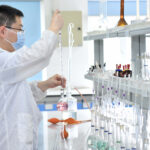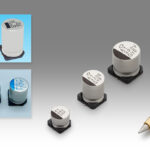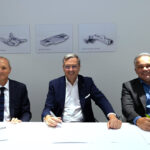ASIA ELECTRONICS INDUSTRYYOUR WINDOW TO SMART MANUFACTURING
Nichicon Innovates Rechargeable Battery Technologies
The small li-ion rechargeable battery SLB Series (Photo 1), launched in 2019 by Nichicon Corporation, uses lithium titanate (LTO) as the negative electrode. Furthermore, has realized a high input/output density comparable to electric double layer capacitors (EDLC) and lithium-ion capacitors (LIC).
It has achieved the ability of rapid charging and discharging at 20C rate. This power storage device has high durability, with little deterioration in capacity even after tens of thousands of charge/discharge cycles at a high rate.
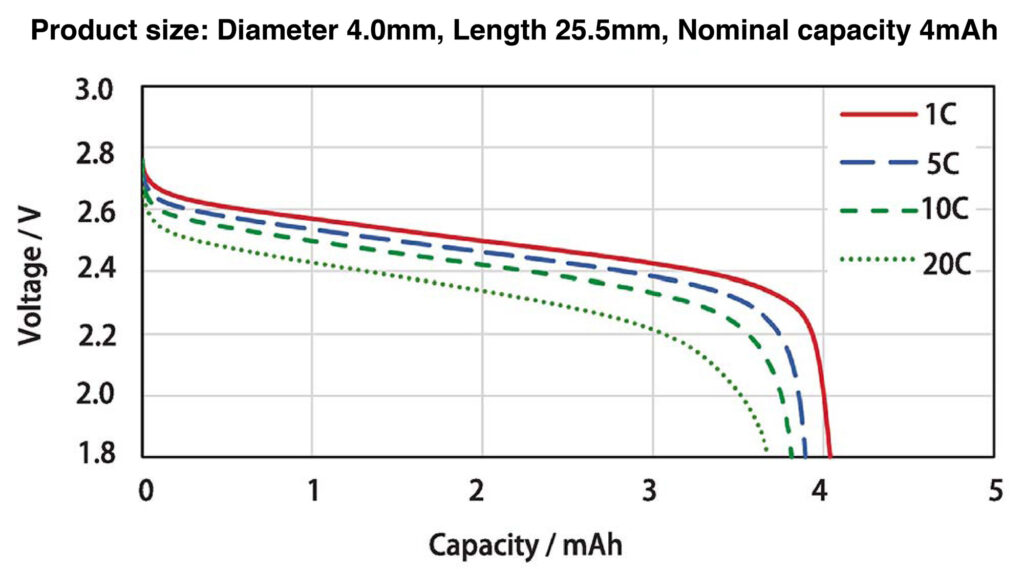
It has excellent low temperature characteristics that can operate even in an environment of minus 30 degrees. In addition, it is quite safe, because it is free from being ignited and emitting smoke, and free from lithium metal deposition causing short circuits and deterioration.
These features make the SLB series a li-ion rechargeable battery that is optimal as a power supply for various IoT edge devices being combined with energy harvesting such as environmental sensors.
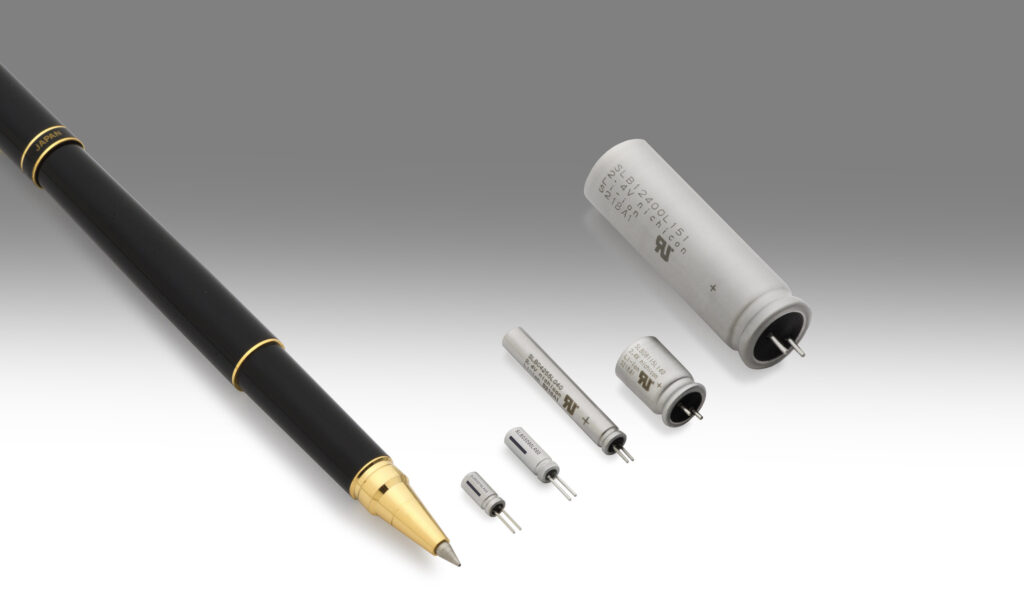
Products Lineup, Discharge Characteristics
As of December 2022, the lineup consists of products with five different sizes. Particularly, the minimum size product has 3mm in diameter, 7mm in length, and a nominal capacity of 0.35mAh. The maximum size product has 12.5mm in diameter, 40mm in length, and a nominal capacity of 150mAh.
In addition, depending on the size, L-forming products that can be placed horizontally have been added to the read processing variations, enhancing convenience when being mounted on boards.
By combining these size variations with excellent discharge characteristics, the series covers the current load necessary during the wide range of communications corresponding to the LPWA standards such as BLE communication, LoRaWAN, LTE-M, etc.
For example, the C-rate characteristics in Figure 1 for the product added last November 2022 comes with a diameter of 4mm, a length of 25.5mm, and a nominal capacity of 4mAh.
In general, li-ion rechargeable batteries are often used under the conditions of low-rate charging (0.5C rate, for example) and medium rate discharging (1C rate, for example). On the other hand, the SLB series has the advantage that both rapid charging and discharging are possible with a high rate of 20C as shown in Figure 1.
Ideal for Communication Modules of IoT Edge Devices
In addition, the SLB series also has excellent characteristics for pulse discharge, i.e., when being instantly discharged by large current. Figure 2 shows voltage change for a product discharged intermittently from a fully charged state (current: 1.0 A, pulse width: 1.5 s, period: 10 s, repeated cycle: 10 times). Particularly, the product comes with nominal capacity of 14mAh, diameter of 8mm, and a length of 11.5mm.
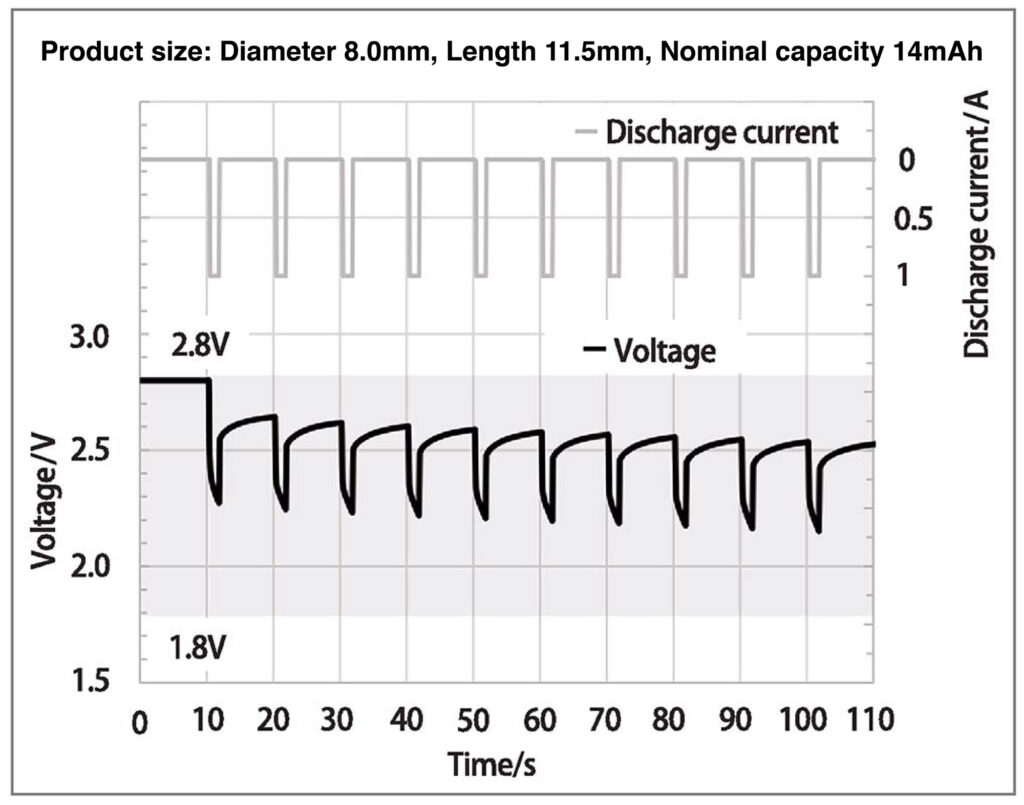
It shows that no large voltage drop occurs despite a large current pulse discharge equivalent to about 70C rate. In fact, the voltage at the end of the 10th discharge remains well above the lower limit of 1.8 V, which is the specification of the SLB series.
The maximum charging current for each size comes at 20C rate. In this case, the discharge of the device can handle high-rate discharge exceeding this specified current for a short period of time. Therefore, it can also be used as a communication module for IoT edge devices, which requires a large instantaneous current for data transmission, and as power supply backup.
Characteristics of Low-Rate Charging
In addition to the above-mentioned high-rate charge/discharge characteristics, the SLB series also has the advantage of efficient electricity storage even when being charged at an extremely low rate.

Figure 3 shows a partial excerpt of the charging curve for a product with a diameter of 3mm, a length of 7mm, and a nominal capacity of 0.35mAh, when being charged at an extremely low rate. Electricity can be stored with the high efficiency of about 90% even under the condition of an extremely slow charging of (1/3500)C rate (100 nA) in a 25°C environment. Therefore, it is suitable for storing weak current from energy harvesters such as solar power generation and vibration power generation.
Development of Board for Evaluating Energy Harvesting
To facilitate the evaluation of the SLB series, which has excellent battery characteristics as described above, the company has developed an evaluation board which can become a system power supply when connected to an energy harvester (Photo 2).
It can be connected to harvesters of both DC output (solar battery, etc.) and those of AC output (oscillation power generation, etc.). Via a high-efficiency power management IC, the energy stored in the SLB series is available for use by connecting to loads either directly or after being boosted up to 3.3V or 5V. It is compatible with all the SLB series having different sizes. The specifications allow easy customization of the optimal settings by switches, corresponding to the harvester and load circuit to be used.
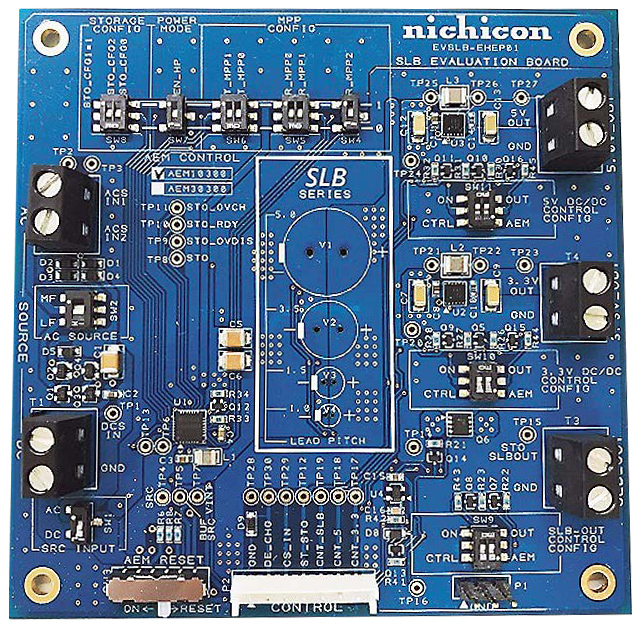
Conclusion
The small li-ion rechargeable battery SLB series of Nichicon Corporation has not only achieved excellent charge/discharge characteristics mentioned above, but also excellent cycle characteristics and low-temperature characteristics. It is ideal for IOT edge devices combined with energy harvesters.
To meet the market demand, the company is developing products that can handle the high-temperature environment of 80°C. Particularly, by expanding the category temperature range which is now between -30°C and +60°C. Sample products will be available in May. The company aims for high durability such that the products can be used not only for consumer applications but also for industrial equipment. It also aims for further expansion of applications.
About This Article:
Nichicon Corporation provided the contents of the article.

